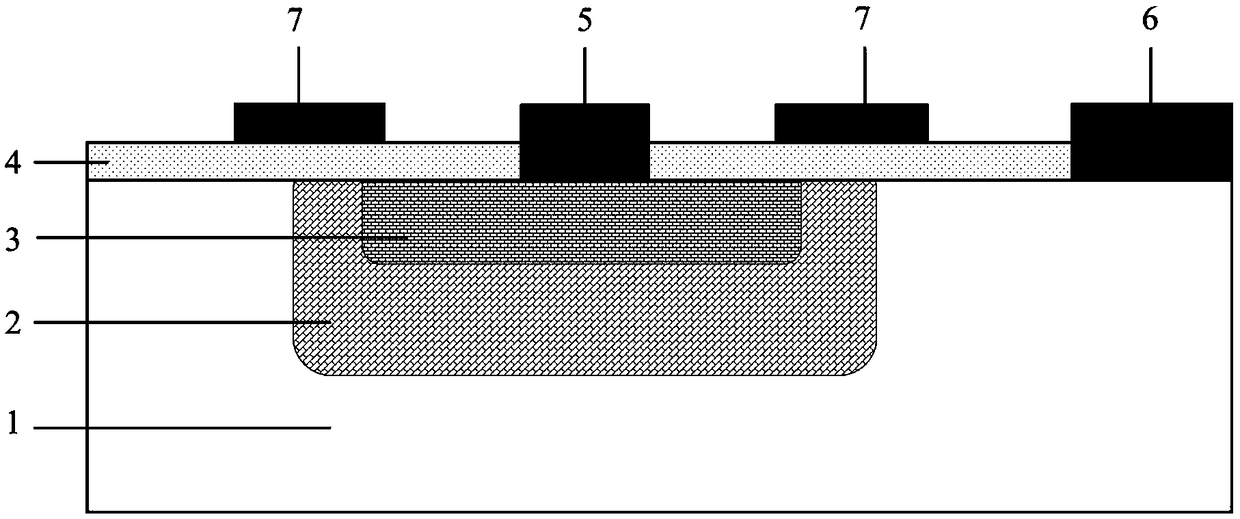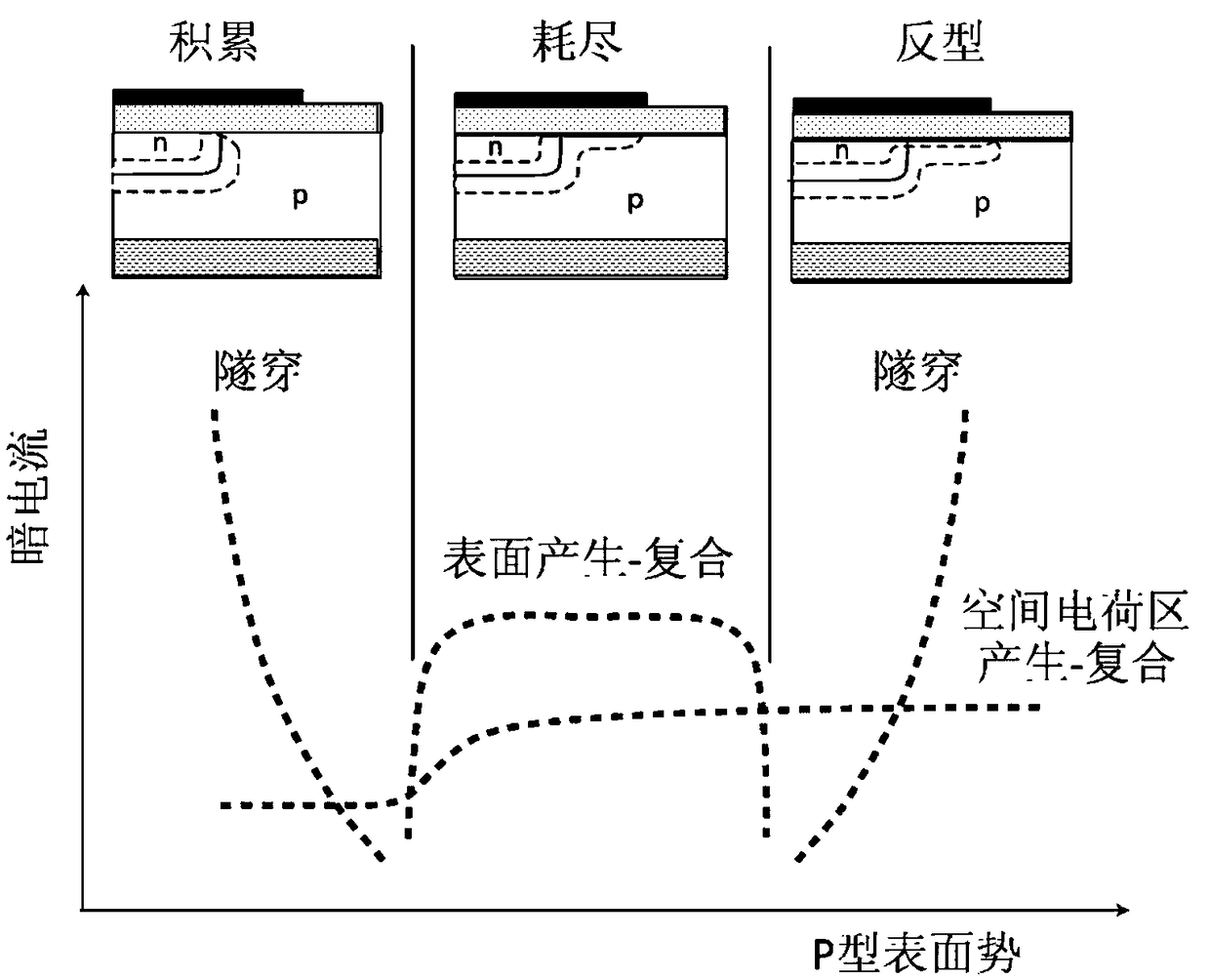Mercury cadmium telluride avalanche diode detector capable of modulating surface energy band
An avalanche diode, mercury cadmium telluride technology, applied in semiconductor devices, electrical components, circuits, etc., can solve problems such as photodiode thermoelectric breakdown, and achieve the effect of suppressing surface leakage current
- Summary
- Abstract
- Description
- Claims
- Application Information
AI Technical Summary
Benefits of technology
Problems solved by technology
Method used
Image
Examples
Embodiment 1
[0014] 1) Form n on p-type HgCdTe by conventional doping + -n - -p structure, HgCdTe p region concentration is 8×10 15 cm -3 , n - Zone concentration is 1 x 10 15 cm -3 , longitudinal n + n under the area - Zone thickness is 3 μm, n + Zone concentration is 1 x 10 17 cm -3 , with a thickness of 1 μm;
[0015] 2) First grow a 100nm cadmium telluride passivation layer on the surface of mercury cadmium telluride;
[0016] 3) Corroding the passivation layer with a cadmium telluride etching solution to open passivation holes in the pn junction photosensitive element area and common electrode passivation holes in the p area;
[0017] 4) 20 nm of tin is grown on the passivation hole and the passivation layer of the pn junction depletion region, and 60 nm of gold is grown.
Embodiment 2
[0019] 1) Form n on p-type HgCdTe by conventional doping + -n - -p structure, HgCdTe p region concentration is 8×10 15 cm -3 , n - Zone concentration is 1 x 10 15 cm -3 , longitudinal n + n under the area - Zone thickness is 3 μm, n + Zone concentration is 1 x 10 17 cm -3 , with a thickness of 1 μm;
[0020] 2) On the surface of mercury cadmium telluride, a 150nm cadmium telluride passivation layer is first grown, and then 100nm of zinc sulfide is grown;
[0021] 3) Corroding the zinc sulfide with hydrochloric acid, corroding the passivation layer with cadmium telluride corrosion solution, and opening the passivation hole in the pn junction photosensitive element area and the common electrode passivation hole in the p area;
[0022] 4) 30 nm of tin is grown on the passivation hole and the passivation layer of the pn junction depletion region, and 100 nm of gold is grown.
Embodiment 3
[0024] 1) Form n on p-type HgCdTe by conventional doping + -n - -p structure, HgCdTe p region concentration is 8×10 15 cm -3 , n - Zone concentration is 1 x 10 15 cm -3 , longitudinal n + n under the area - Zone thickness is 3 μm, n + Zone concentration is 1 x 10 17 cm -3 , with a thickness of 1 μm;
[0025] 2) On the surface of mercury cadmium telluride, a 200nm cadmium telluride passivation layer is first grown, and then 200nm of zinc sulfide is grown;
[0026] 3) Corroding the zinc sulfide with hydrochloric acid, corroding the passivation layer with cadmium telluride corrosion solution, and opening the passivation hole in the pn junction photosensitive element area and the common electrode passivation hole in the p area;
[0027] 4) 40 nm of tin is grown on the passivation hole and the passivation layer of the pn junction depletion region, and 120 nm of gold is grown.
PUM
| Property | Measurement | Unit |
|---|---|---|
| Thickness | aaaaa | aaaaa |
| Thickness | aaaaa | aaaaa |
| Thickness | aaaaa | aaaaa |
Abstract
Description
Claims
Application Information
 Login to view more
Login to view more - R&D Engineer
- R&D Manager
- IP Professional
- Industry Leading Data Capabilities
- Powerful AI technology
- Patent DNA Extraction
Browse by: Latest US Patents, China's latest patents, Technical Efficacy Thesaurus, Application Domain, Technology Topic.
© 2024 PatSnap. All rights reserved.Legal|Privacy policy|Modern Slavery Act Transparency Statement|Sitemap



